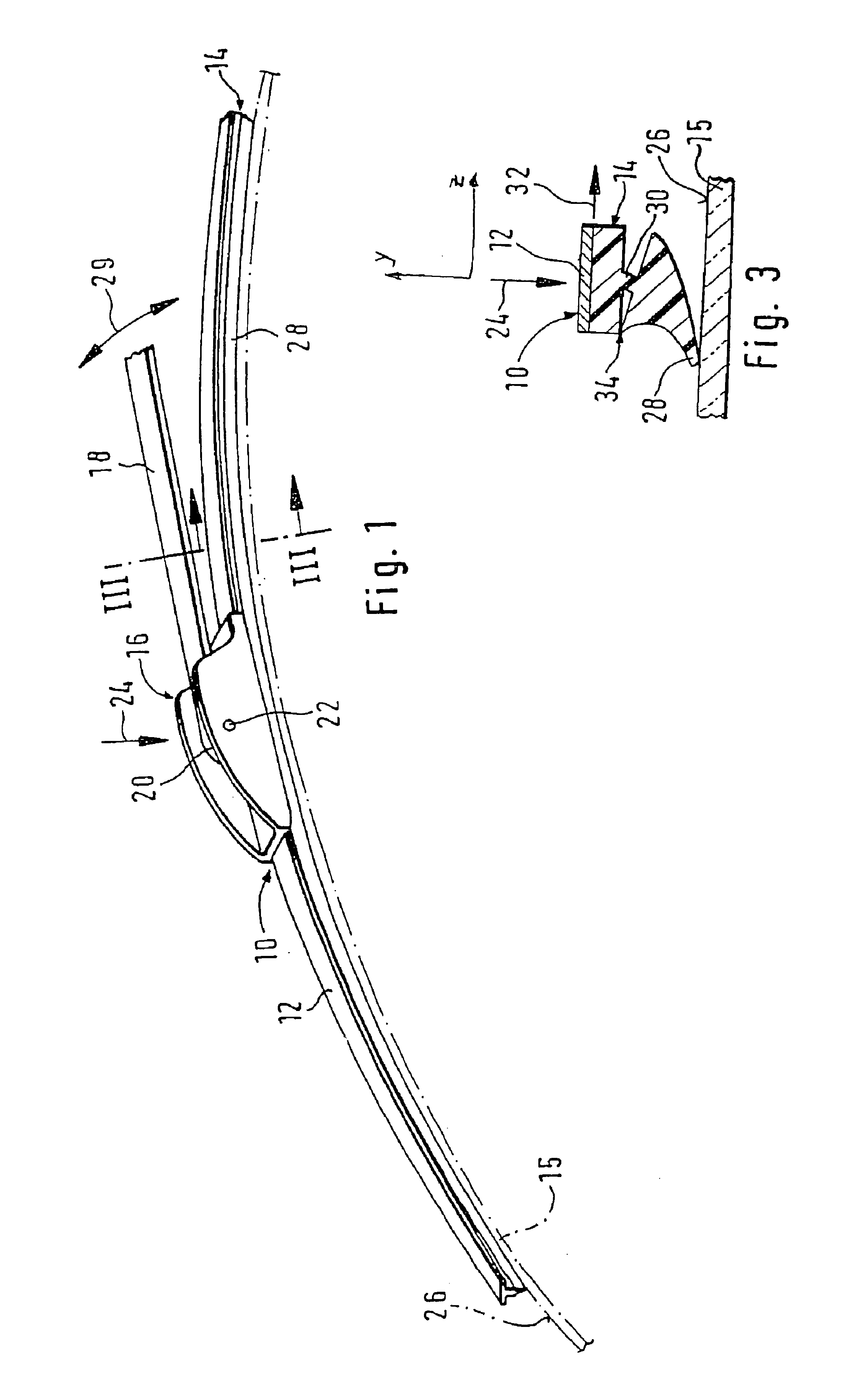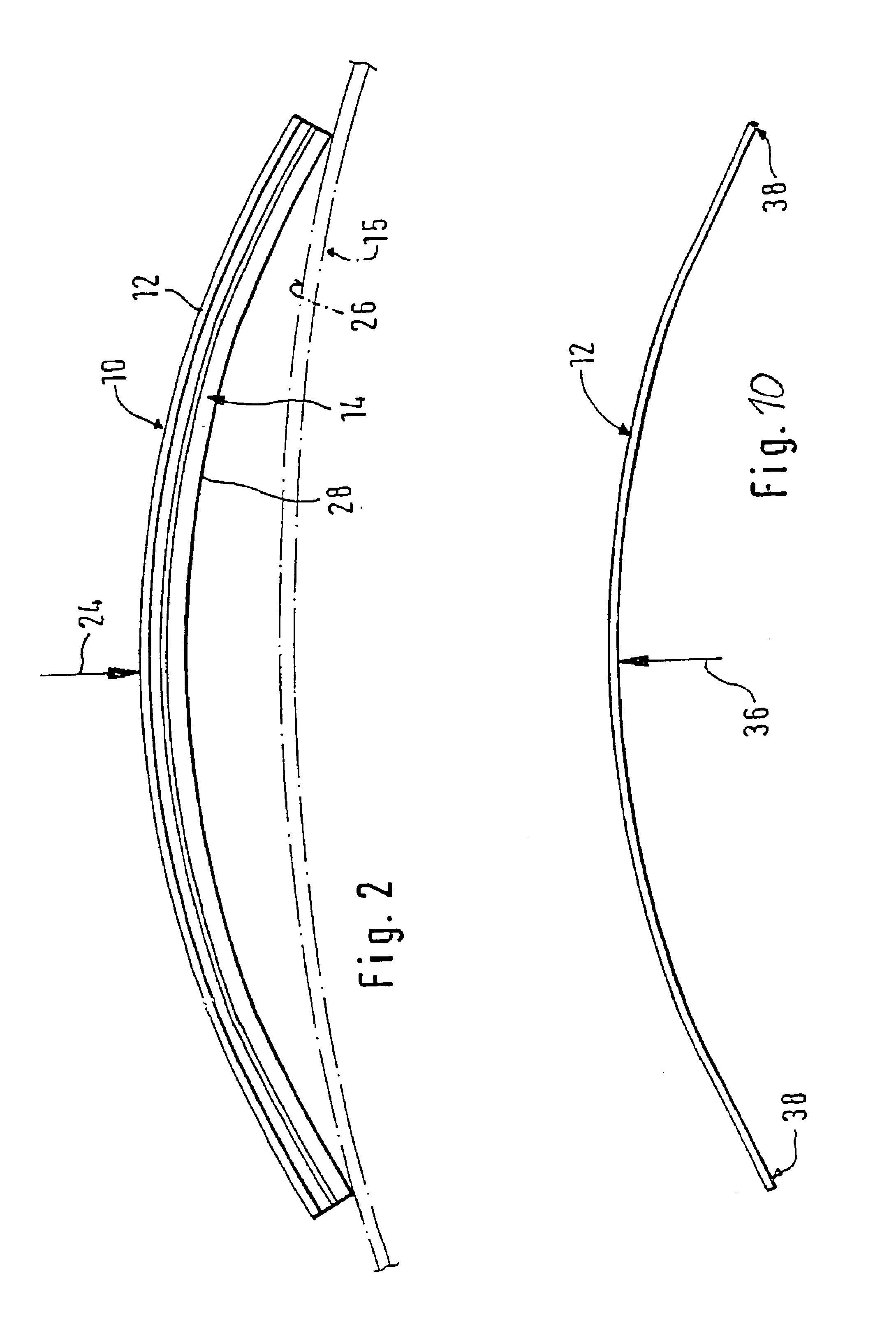Wiper blade for windshields, especially automobile windshields, and method for the production thereof
a technology for windshields and blades, which is applied in the field of windshield wiper blades, can solve the problems of affecting the quality of windshield wipers, affecting the service life of vehicles, and affecting the service life of vehicles, and achieves the effects of favorable wiping results, favorable wiping quality, and convenient production
- Summary
- Abstract
- Description
- Claims
- Application Information
AI Technical Summary
Benefits of technology
Problems solved by technology
Method used
Image
Examples
Embodiment Construction
A wiper blade 10 shown in FIG. 1 has an elongated, spring elastic support element 12, which is also referred to as a flat bar, for a wiper strip 14, which is shown separately in FIG. 10. As shown in FIGS. 1, 3, and 4, the support element 12 and the wiper strip 14 are connected to each other with their longitudinal axes parallel. On the top side of the support element 12 remote from the window 15 to be wiped—shown with dot-and-dash lines in FIG. 1—, there is a connecting mechanism in the form of a connecting device 16 which can detachably connect the wiper blade 10 to a driven wiper arm 18 that is guided on the body of the motor vehicle. The elongated rubber elastic wiper strip 14 is disposed on the underside of the support element 12 oriented toward the window 15.
A hook, which serves as a counterpart connection means, is formed onto the free end 20 of the wiper arm 18 and engages a pivot bolt 22 that is part of the connecting device 16 of the wiper blade 10. The securing between the...
PUM
 Login to View More
Login to View More Abstract
Description
Claims
Application Information
 Login to View More
Login to View More - R&D
- Intellectual Property
- Life Sciences
- Materials
- Tech Scout
- Unparalleled Data Quality
- Higher Quality Content
- 60% Fewer Hallucinations
Browse by: Latest US Patents, China's latest patents, Technical Efficacy Thesaurus, Application Domain, Technology Topic, Popular Technical Reports.
© 2025 PatSnap. All rights reserved.Legal|Privacy policy|Modern Slavery Act Transparency Statement|Sitemap|About US| Contact US: help@patsnap.com



